Name: Chloe Circenis
Advisor: Prof. Mona Farrah Attwa
Class: LING 3430: Semantics
Semester: Fall 2022
LURA 2023
How is the English language used to encourage safe driving in a predominantly non-English speaking community? While it seems illogical to place English road signs in a location such as Sikkim, India, where any foreign tourists wishing to visit would require special documentation to enter due to army occupation, that did not stop the Border Roads Organization, and their delightful collection of English road signs between Gangtok and Tsomgo Lake became one of the linguistic highlights of my time in India.
Their placement of English signs is especially interesting when considering the impressive use of homonymy, metaphor, deixis, and various other lexical relations (relationships between words); my primary focus in this analysis will be on the use of homonymy. The texts are not only well- formed but are also comedic to English speakers. Many of the signs within the sample begin with a simple BRO. While this is meant to be an acronym for Border Roads Organisation, it comes across as if the writer is addressing the reader as a bro, shorthand for brother, usually implying a familiarity between speaker and addressee. This familiarity, in combination with the threatening comedic safety-inspiring phrases, only increases the comedic value of the signs.
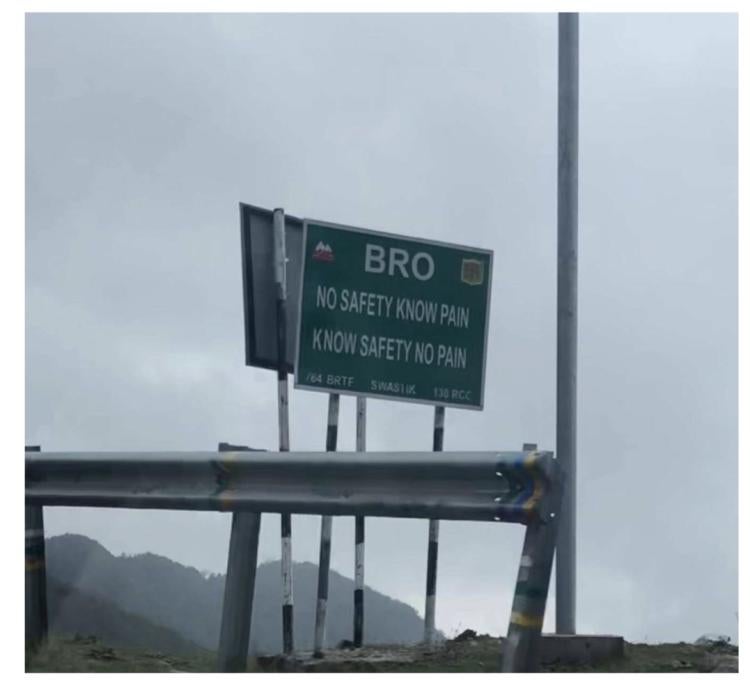
The lexical relation that occurred the most within the sample I collected in Sikkim is homonymy. Homonymy is the relationship between two words that sound the same but have unrelated meanings. Homonymy can occur in two ways: stated and unstated. Stated homonymy occurs when both members of the homonymous pair are explicitly written while unstated homonymy only has one member explicitly written while the other is implied through the context. For example, this sign, which reads BRO NO SAFETY KNOW PAIN KNOW SAFETY NO PAIN contains a stated homonymous pair: NO and KNOW because both words are explicitly written on the sign. The first phrase, NO SAFETY KNOW PAIN, indicates that a lack of safety will bring the reader suffering whereas the second phrase, KNOW SAFETY NO PAIN, indicates that knowledge of safety will protect you. Both phrases contain the same four words; the only changes between the two being the shifting locations of NO and KNOW. The switching locations highlight the relationship between safety and pain, encouraging safe driving in an almost threatening, but comedic, way.
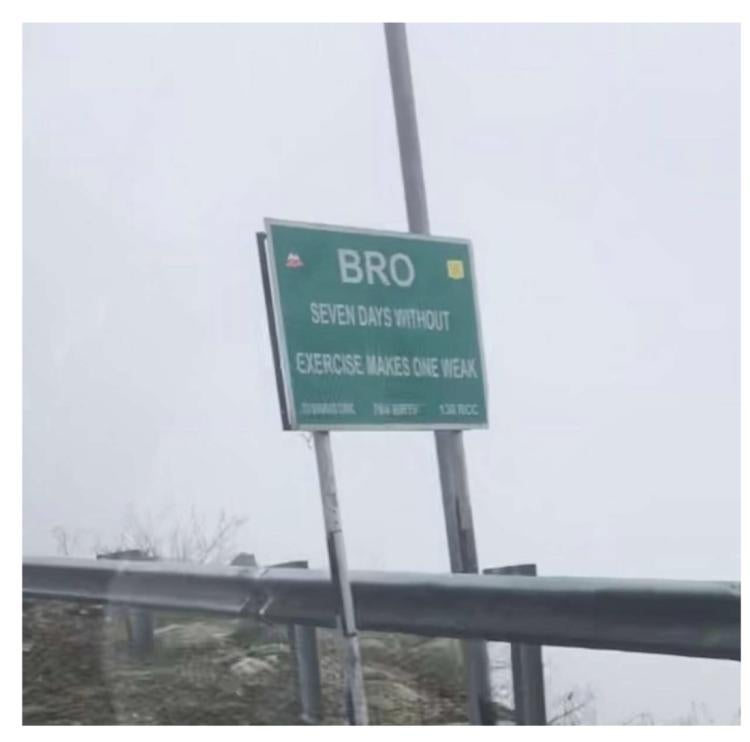
Homonomy occurs in two other examples, and in these it is unstated: BRO SEVEN DAYS WITHOUT EXERCISE MAKES ONE WEAK and SAFETY STARTS WITH “S” BEGINS WITH “YOU”. The unstated pairs within these signs are WEAK and week, and “YOU” and u. The first member of each pair is stated while the written context supplies the reader with the unstated member. In the first sign, ‘SEVEN DAYS’ triggers the reader to think of a week because it is a measurement of time consisting of seven days. This sign also contains unstated polysemy, wherein a single word has two related meanings. In the frame of WEAK, ONE refers to an individual, but in the case of the unstated homonymous member ‘week’, it is a measuring numeral. Lastly, this first sign is not related to driving safety in the slightest and as such is made more comedic through the lack of context.
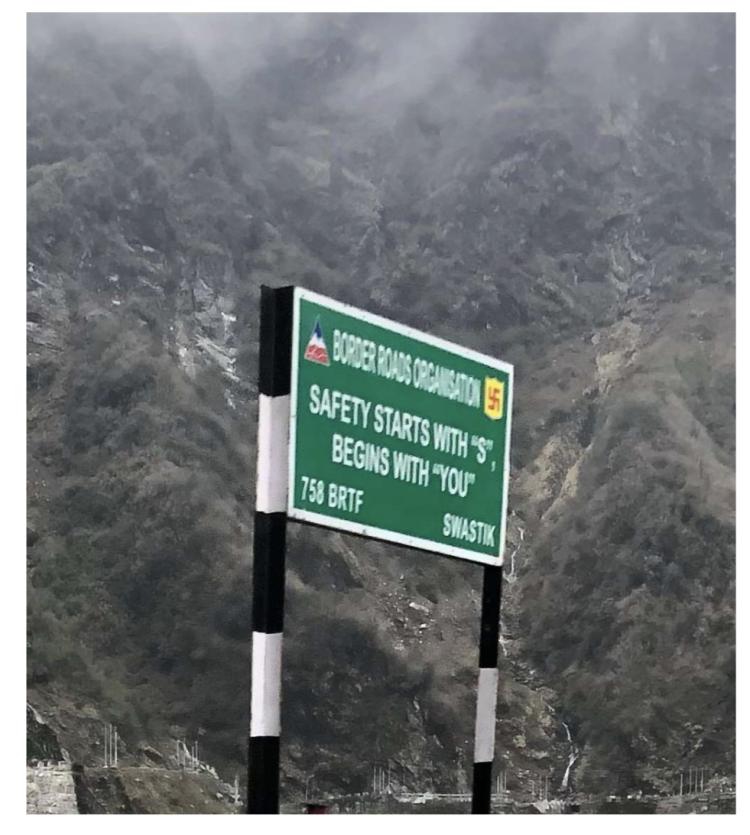
The second sign contains a triggering phrase for the unstated homonomous pair: STARTS WITH “S”. The mention of S alludes to the spelling of the word SAFETY and primes other letters in the reader’s mind; thus, when BEGINS WITH “YOU” is read, the homonymy between YOU and the primed letter U emphasizes the indication that the reader can choose safety. This is additionally comedic because SAFETY is not spelled with a U.
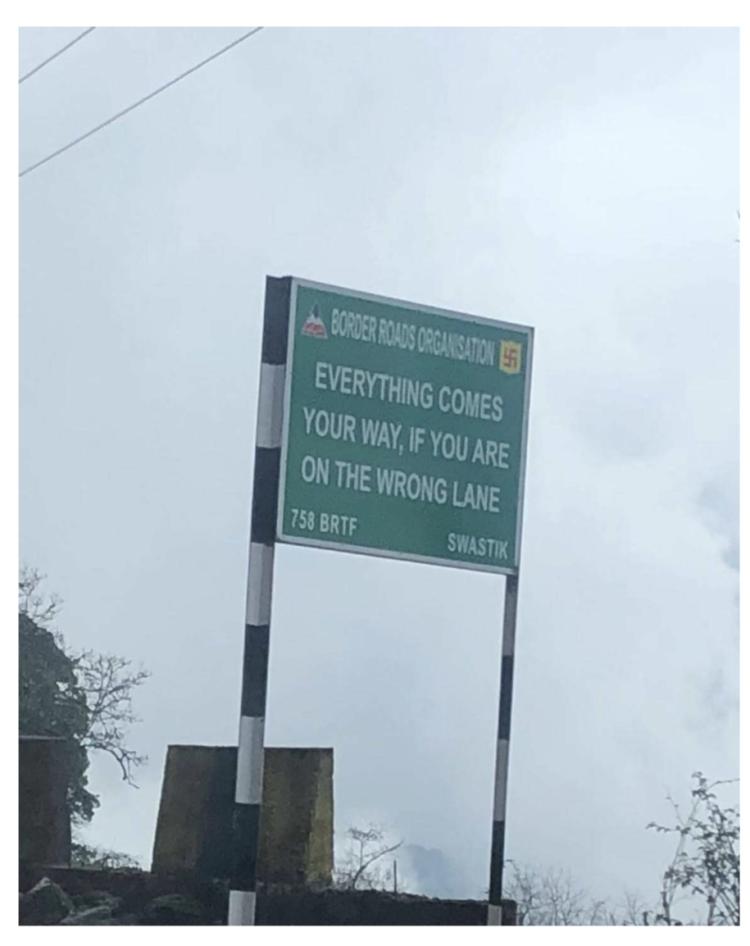
In another sign, metaphor plays a heavy role in the semantics of EVERYTHING COMES YOUR WAY, IF YOU ARE ON THE WRONG LANE due to English speakers viewing the time relatively: the future as ahead of them and the past as behind them. Typically, the phrase “everything comes your way” is used to refer to the coming occurrence of future events. Motion and space function as a source domain, a set of concrete concepts used to attempt to describe and convey more abstract ideas – in this case, time – called the target domain. This sign plays off of this commonly used phrase, however, in this situation, the phrase EVERYTHING COMES YOUR WAY is no longer being used as a metaphor because the phrase IF YOU ARE ON THE WRONG LANE returns both the source and target domains to concrete ideas – cars driving in your direction. Additionally, when used to metaphorically refer to events, this phrase typically has a good connotation – i.e., that good things are in your future – whereas in this context it alludes to negative events such as head-on collisions. Overall, the sign is comedic because it utilizes readers’ background knowledge by using a metaphor that is so often used that it becomes irregular when used unmetaphorically.
These signs reveal the extent to which English has spread around the world and impacted cultures all along the way. They demonstrate an ample understanding of homonymy, polysemy, and metaphor, which are discussed above, as well as logic, deixis, and modality, which have not been discussed but are present in the signs below. If you are interested in reading my extended analysis of English road signs in Sikkim, India, or would like to discuss the topic over a cup of coffee, you can contact me at chloe.circenis@colorado.edu for additional information.
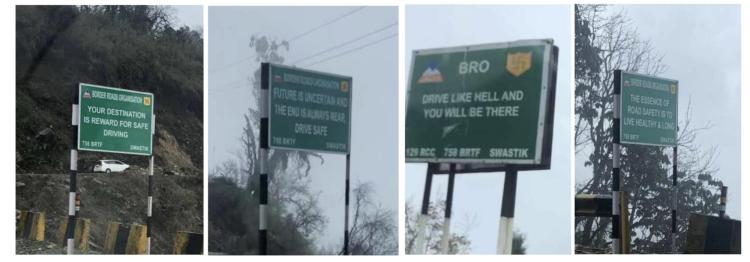
Image Credit
https://www.publicdomainpictures.net/en/
References
-
Circenis, C., (2022). A Semantic Analysis of English Road Signs in Sikkim, India. Unpublished manuscript.
-
Circenis, C. (2022). Road signs in Sikkim, India

 Chloe Circenis is majoring in linguistics while also pursuing a double minor in Arabic and Hindi/Urdu, as well as a certificate in cognitive science. She is a native Coloradan who loves to do Colorado things and perform linguistic analysis on these things.
Chloe Circenis is majoring in linguistics while also pursuing a double minor in Arabic and Hindi/Urdu, as well as a certificate in cognitive science. She is a native Coloradan who loves to do Colorado things and perform linguistic analysis on these things.